de-Broglie equation gives the relation between particle and wave nature of the matter. In the given table, Column I shows the mass of the matter, Column II shows the speed of the matter and column III shows the kinetic energy of matter.
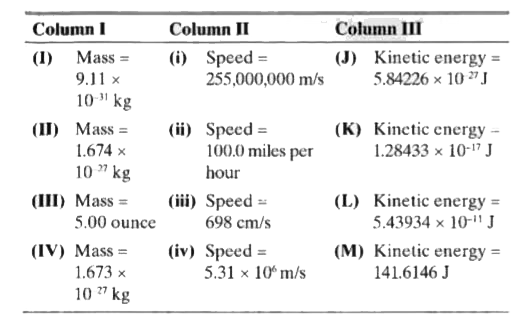
What are the conditions for an electron with a wavelength at 1.37Å?
(I)(iv)(M)
(I)(iv)(K)
(II)(i)(J)
(II)(i)(L)
The correct Answer is:A, B, C, D
Step by step video, text & image solution for de-Broglie equation gives the relation between particle and wave nature of the matter. In the given table, Column I shows the mass of the matter, Column II shows the speed of the matter and column III shows the kinetic energy of matter. What are the conditions for an electron with a wavelength at 1.37 Å? by Physics experts to help you in doubts & scoring excellent marks in Class 12 exams.
Updated on:21/07/2023Topper's Solved these Questions
- PHOTONS AND MATTER WAVESBook:RESNICK AND HALLIDAYChapter:PHOTONS AND MATTER WAVESExercise:PRACTICE QUESTIONS(Integer Type)
Explore 4 Videos
- PHOTONS AND MATTER WAVESBook:RESNICK AND HALLIDAYChapter:PHOTONS AND MATTER WAVESExercise:PRACTICE QUESTIONS (Link Comprehension)
Explore 17 Videos
- OSCILLATIONSBook:RESNICK AND HALLIDAYChapter:OSCILLATIONSExercise:Practice Questions
Explore 57 Videos
- RELATIVITYBook:RESNICK AND HALLIDAYChapter:RELATIVITYExercise:PRACTICE QUESTIONS (Integer Type)
Explore 5 Videos
Similar Questions
de-Broglie equation gives the relation between particle and wave nature of the matter. In the given table, Column I shows the mass of the matter, Column II shows the speed of the matter and column III shows the kinetic energy of matter.
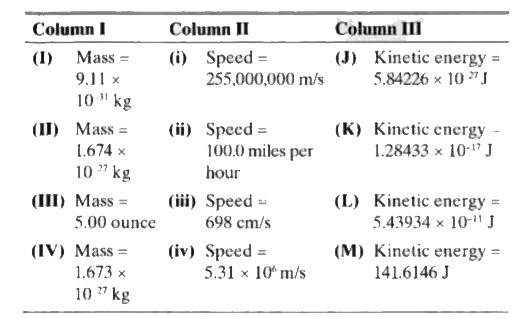
What are the conditions for hydrogen ion with a wavelength at 1.50×10−7m ?
View Solutionde-Broglie equation gives the relation between particle and wave nature of the matter. In the given table, Column I shows the mass of the matter, Column II shows the speed of the matter and column III shows the kinetic energy of matter.
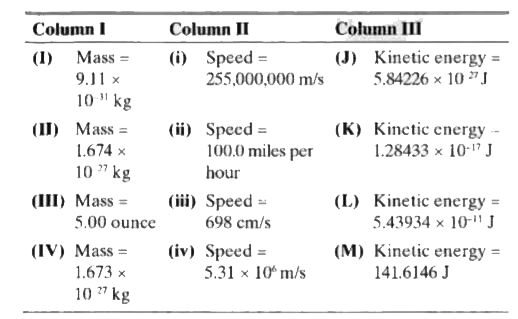
What are the conditions for a proton with a wavelength at 1.55×10−15m?
View Solution
Knowledge Check
Interference is an important property of light. In the given table, Column I shows the properties of interfering waves, Column II shows the phase difference, and Column III shows the path difference between two interfering waves
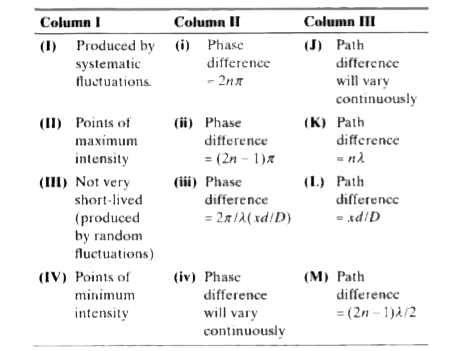
What are the conditions for constructive interference?A(I) (iv) (M)B(IV) (ii) (L)C(II) (i) (K)D(II) (i) (K)Interference is an important property of light. In the given table, Column I shows the properties of interfering waves, Column II shows the phase difference, and Column III shows the path difference between two interfering waves
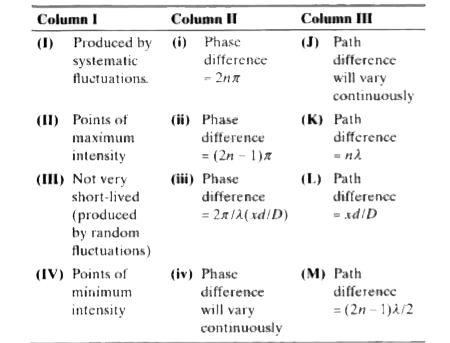
What are the conditions for sustained interference?A(II) (ii) (J)B(III) (iii) (L)C(IV) (i) (L)D(II) (iii) (M)Interference is an important property of light. In the given table, Column I shows the properties of interfering waves, Column II shows the phase difference, and Column III shows the path difference between two interfering waves
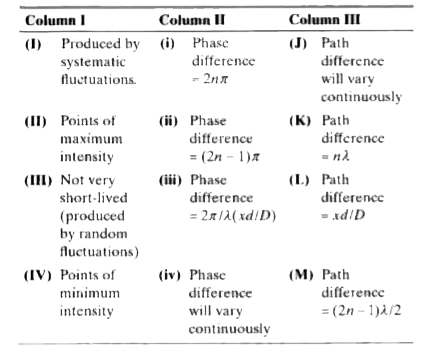
What are the conditions for destructive interference?A(I) (ii) (J)B(IV) (ii) (M)C(II) (iii) (L)D(I) (i) (M)
In the given table, Column I gives description of waves characteristics, Column II gives their characteristic and Column II shows their graphical representation.

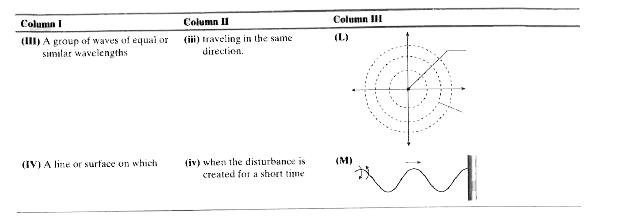
What are the characteristics of a wave pulse?
View SolutionMany side particles are produced when radioactive decay takes place.In the given table, Column I shows the charge of the different side particles, Column II shows the mass and Column III shows the ionization power of these side particles.
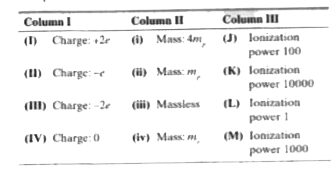
What are the characteristics of α- particle?
View SolutionIn the given table, Column I gives description of waves characteristics, Column II gives their characteristic and Column II shows their graphical representation.

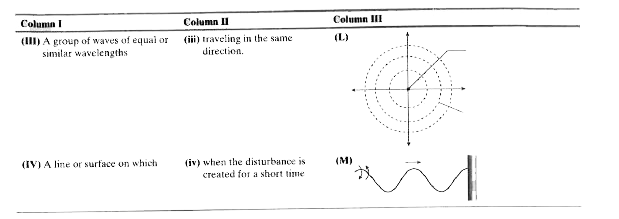
What are the characteristics of a wave function?
View SolutionIn the given table, Column I gives description of waves characteristics, Column II gives their characteristic and Column II shows their graphical representation.

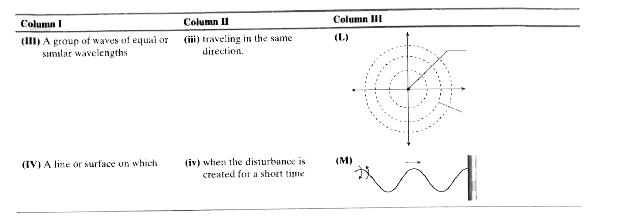
What are the characteristics of a wave front?
View SolutionMany side particles are produced when radioactive decay takes place.In the given table, Column I shows the charge of the different side particles, Column II shows the mass and Column III shows the ionization power of these side particles.
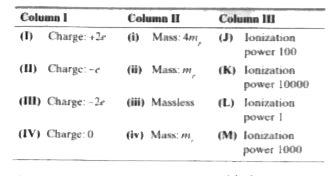
What the characteristics of β- particle?
View Solution
